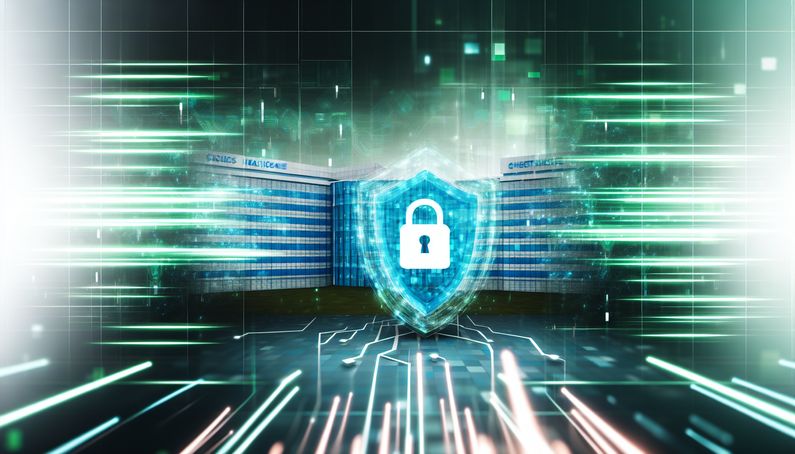
Strengthening Healthcare Cybersecurity: Lessons from the Kettering Health Ransomware Attack
The recent Interlock ransomware attack on Kettering Health has sent shockwaves through the healthcare industry, highlighting the sector’s vulnerability to cyber threats. This breach is not an isolated incident but part of a disturbing trend, with 26 confirmed ransomware attacks on U.S. healthcare companies in 2025 alone, as reported by Comparitech. The attack underscores the urgent need for healthcare organizations to strengthen their cybersecurity measures to protect sensitive patient data and ensure operational continuity. The reliance on outdated IT systems and the increasing use of Remote Access Trojans (RATs)—malicious software that allows hackers to control systems remotely—further exacerbate these vulnerabilities, making it imperative for healthcare providers to adopt comprehensive cybersecurity strategies.
Broader Implications for Healthcare Cybersecurity
Increasing Frequency of Ransomware Attacks
The healthcare sector has become an increasingly attractive target for cybercriminals, as evidenced by the Interlock ransomware attack on Kettering Health. The incident is part of a broader trend, with 26 confirmed ransomware attacks on U.S. healthcare companies in 2025 alone, and 92 more suspected cases, according to Comparitech. This surge in attacks highlights the urgent need for healthcare organizations to bolster their cybersecurity measures to protect sensitive patient data and maintain operational integrity.
Vulnerabilities in Healthcare IT Infrastructure
Healthcare organizations often rely on outdated IT systems, making them vulnerable to attacks like those perpetrated by the Interlock group. The Kettering Health breach exposed significant vulnerabilities, including reliance on electronic health record (EHR) systems that can be easily disrupted. The attack forced Kettering Health to revert to manual processes, such as using pen and paper, which significantly hampered their ability to provide timely care (BleepingComputer). This incident underscores the need for healthcare providers to modernize their IT infrastructure and implement robust cybersecurity protocols.
Financial and Operational Impact
The financial and operational impact of ransomware attacks on healthcare institutions is profound. The Interlock ransomware attack on Kettering Health resulted in the theft of 941 GB of sensitive data, including patient records and financial information. The attack caused a system-wide outage, disrupting services across 14 medical centers and 120 outpatient facilities. The financial implications extend beyond immediate ransom demands, as organizations face costs related to system restoration, legal liabilities, and potential fines for data breaches. Additionally, the operational impact includes canceled procedures and delayed patient care, which can have long-term effects on patient trust and organizational reputation.
The Role of Remote Access Trojans (RATs)
The use of Remote Access Trojans (RATs) in ransomware attacks is a growing concern. The Interlock group has been linked to the deployment of a RAT known as NodeSnake, which facilitates unauthorized access to targeted networks (BleepingComputer). This tactic allows cybercriminals to infiltrate systems, gather sensitive information, and deploy ransomware at opportune moments. The use of RATs highlights the importance of comprehensive network monitoring and endpoint security to detect and mitigate unauthorized access attempts.
Strategies for Enhancing Cybersecurity in Healthcare
To address the growing threat of ransomware, healthcare organizations must adopt a multi-faceted approach to cybersecurity. Key strategies include:
-
Regular Security Audits and Risk Assessments: Conducting regular security audits and risk assessments can help identify vulnerabilities and prioritize areas for improvement. This proactive approach enables organizations to address potential weaknesses before they can be exploited by cybercriminals.
-
Employee Training and Awareness: Human error is a significant factor in cybersecurity breaches. Providing regular training and awareness programs for employees can help reduce the risk of phishing attacks and other social engineering tactics that are commonly used to gain access to healthcare networks.
-
Advanced Threat Detection and Response: Implementing advanced threat detection and response solutions can help healthcare organizations quickly identify and respond to potential threats. These solutions utilize artificial intelligence and machine learning to detect anomalies and provide real-time alerts, enabling rapid response to mitigate the impact of an attack.
-
Data Encryption and Access Controls: Encrypting sensitive data and implementing strict access controls can help protect patient information from unauthorized access. By ensuring that only authorized personnel have access to sensitive data, healthcare organizations can reduce the risk of data breaches.
-
Incident Response Planning: Developing and regularly updating an incident response plan is crucial for minimizing the impact of a ransomware attack. This plan should outline the steps to be taken in the event of a breach, including communication protocols, data recovery procedures, and legal considerations.
By implementing these strategies, healthcare organizations can enhance their cybersecurity posture and better protect against the growing threat of ransomware attacks. The Kettering Health incident serves as a stark reminder of the importance of proactive cybersecurity measures in safeguarding sensitive patient data and maintaining the integrity of healthcare services.
Final Thoughts
The Kettering Health breach serves as a stark reminder of the critical need for robust cybersecurity measures in the healthcare sector. As ransomware attacks become more frequent and sophisticated, healthcare organizations must prioritize the modernization of their IT infrastructure and the implementation of advanced security protocols. The use of Remote Access Trojans (RATs) and the financial and operational impacts of such breaches highlight the importance of proactive measures, including regular security audits, employee training, and incident response planning. By adopting a multi-faceted approach to cybersecurity, healthcare providers can better protect sensitive patient data and maintain the integrity of their services. The lessons learned from the Interlock ransomware attack should drive the industry towards more resilient and secure practices.
References
- BleepingComputer. (2025). Interlock ransomware claims Kettering Health breach, leaks stolen data. https://www.bleepingcomputer.com/news/security/interlock-ransomware-claims-kettering-health-breach-leaks-stolen-data/
- The Register. (2025). Ransomware scum leak Kettering patient data. https://www.theregister.com/2025/06/04/ransomware_scum_leak_kettering_patient_data/
- TechCrunch. (2025). Ransomware gang claims responsibility for Kettering Health hack. https://techcrunch.com/2025/06/04/ransomware-gang-claims-responsibility-for-kettering-health-hack/



